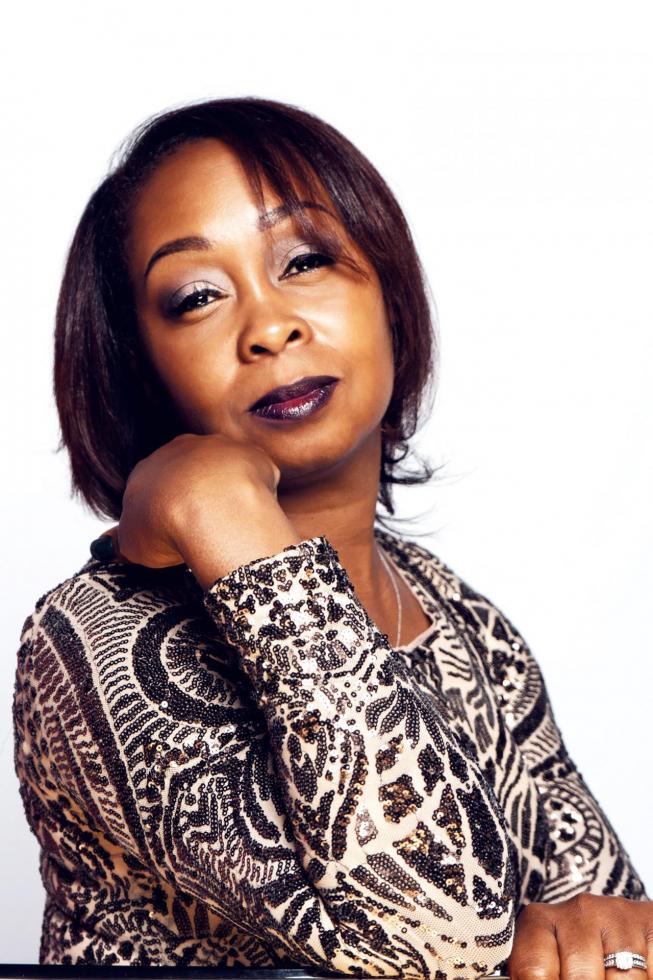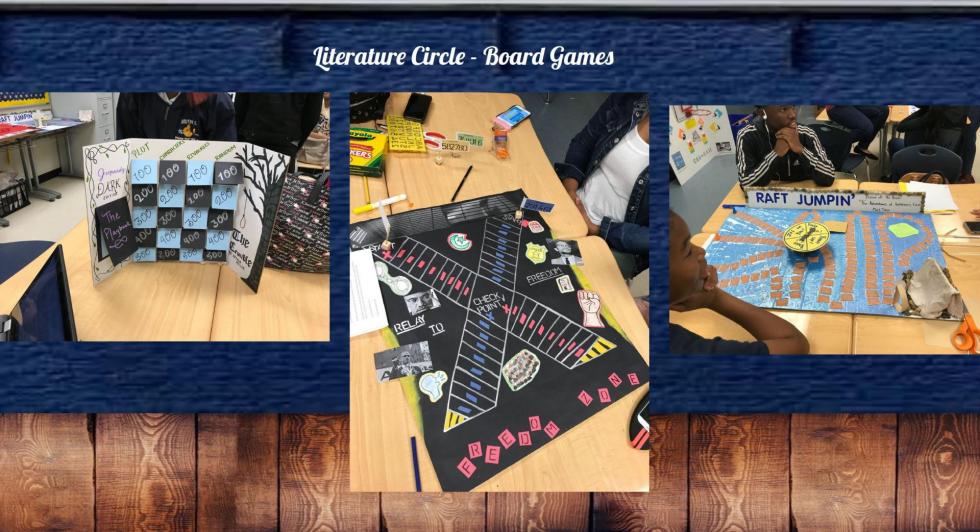ELA Instruction
Every Day Students Are Lit: Engaging ELA Instruction
By Diane James, SREB
 The best way to improve
writing, speaking and vocabulary skills is through literature.
Studying literature also teaches students about their past, other
cultures and broadens their horizons and view of the world. It
entertains too!
The best way to improve
writing, speaking and vocabulary skills is through literature.
Studying literature also teaches students about their past, other
cultures and broadens their horizons and view of the world. It
entertains too!
But not all students like to read. “We know that students don’t wake up in the morning and say “yay, literature,” says Vernitria Rice, an English language arts teacher at Southwest Dekalb High School in Decatur, Georgia. However, engaging ELA instruction can ignite a curiosity and interest in reading.
Rice uses captivating projects, student competitions and literature circles in which small groups of students gather to read, discuss and engage in critical thinking. Through this cooperative learning experience, students debate ideas, share experiences and deepen their understanding of books. A bonus is that struggling readers gain access to grade-level materials and realize that reading is fun!
Literature Circle Grouping
 “A lot of students
don’t care about their own grades, but they don’t want to let
their peers down,” says Rice. That’s why grouping is important
and effective in literature circles. It must be strategic and
intentional. In the general level classes, Rice applies
heterogeneous grouping in which students of more diverse
abilities are placed together. There is always at least one
student in the group who is very motivating and reads on grade
level to help the rest of the group. Rice uses homogenous
grouping in her advanced classes as all students have similar
abilities and read on grade level or above.
“A lot of students
don’t care about their own grades, but they don’t want to let
their peers down,” says Rice. That’s why grouping is important
and effective in literature circles. It must be strategic and
intentional. In the general level classes, Rice applies
heterogeneous grouping in which students of more diverse
abilities are placed together. There is always at least one
student in the group who is very motivating and reads on grade
level to help the rest of the group. Rice uses homogenous
grouping in her advanced classes as all students have similar
abilities and read on grade level or above.
Literature Circle: Differentiation
Literature circles must be differentiated. In Rice’s classes, students must read three books from an approved list. Accelerated and AP students choose their books, but in her general level class, all students read the same book, and each group becomes an expert on one section of it. They discuss the book together and do activities to share with others as preparation for class assessments.
 Once a week, students gather in
literature circles to complete exercises related to selected
texts and complete study questions. Students have about three
weeks to complete the book, culminating in a project.
Once a week, students gather in
literature circles to complete exercises related to selected
texts and complete study questions. Students have about three
weeks to complete the book, culminating in a project.
Another part of her differentiation process involves how students access books. They enjoy an array of options, including an electronic version, a hard copy from the classroom, library or media center, or a YouTube audio recording. Rice says her 10th-graders sometime FaceTime each other while listening to a recording. She’s delighted that even those who could not read on grade level knew what was happening in the book because they were listening and engaging with their peers.
Products and Projects
Rice shares the following group projects and procedures that get and keep students engaged.
-
Assign each group a series of chapters from a novel and require them to create a visual representation (storyboard or Google slides) of the events in the chapters.
-
Identify 10 vocabulary words: define and share in a sentence.
-
Use text connections.
a. Text to text: Compare to something you’ve read before.
b. Text to self: Compare to a personal experience.
c. Text to world: Compare to a world event.
Choose one of the following projects to complete with your literacy circle members.
| Project Option | Project Description |
| iMovie Book Trailer |
|
| Character Instagram |
|
| Character Playlist |
|
| Scene Script and Performance |
|
Board Game and Project Competition
Students compete with other groups at the end of the year by creating a board game of their favorite book. The game must contain game pieces, trivia cards and instructions. The game should give players a good understanding of the novel’s plot, characters, setting and theme.
“These presentations are a big deal. You have to wow me,” maintains Rice. Students have buy-in because they have a choice, and they want to win. Even the students who didn’t read the entire book will read enough for the project. “Reading is reading, that’s what I’ve come to resolve,” says Rice. “They definitely become engaged with these projects.”
Contact: Vernitria Rice, Vernitria_V_Rice@dekalbschoolsga.org
This article was featured in the October 2022 issue of SREB School Improvement’s Promising Practices Newsletter.


